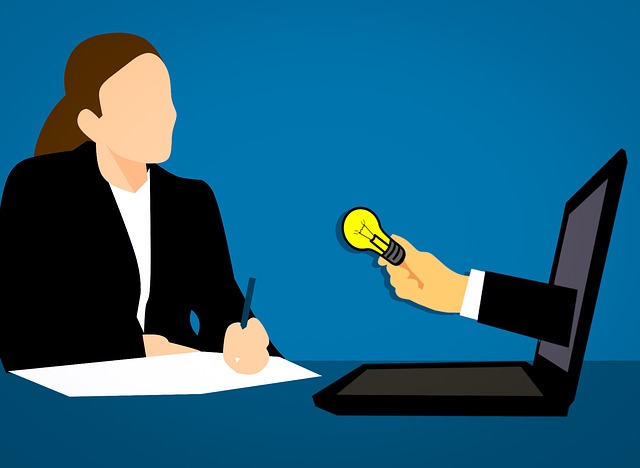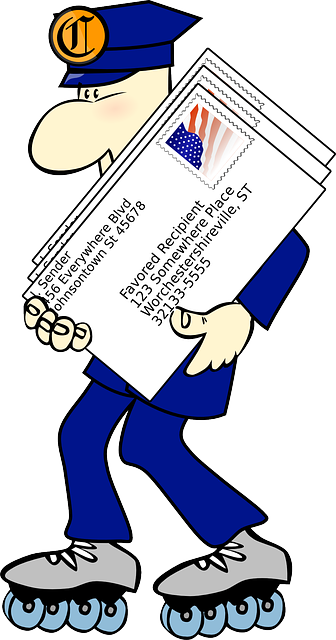Are you tired of receiving generic, soulless emails that make you question your existence? Well, fear not, my friend, because there is a light at the end of this impersonal tunnel. Introducing the magical world of email personalization, where you can build stronger customer relationships and bring joy back into your inbox.
Imagine opening an email that feels like it was written just for you, with content that speaks to your deepest desires and needs. It’s like receiving a warm hug from a long-lost friend. But how can you achieve such email nirvana? Fear not, for I shall bestow upon you the sacred tips of the personalization gods.
From segmenting your email list to implementing behavioral triggers, I will guide you on this transformative journey. So, get ready to revolutionize your email marketing game and forge unbreakable bonds with your customers.
The era of generic emails is over. It’s time to personalize, connect, and conquer!
Key Takeaways
- Personalized emails make customers feel valued and understood
- Segmenting email lists improves engagement rates
- Tailored content based on demographics, purchase history, or preferences
- Personalized offers and promotions increase conversion and loyalty
Segment Your Email List
You’ll see better engagement rates when you segment your email list to deliver targeted messaging that truly resonates with your customers’ specific needs and interests.
By dividing your subscribers into distinct groups based on demographics, purchase history, or preferences, you can create personalized content that speaks directly to their desires.
Tailoring your emails with customized offers and promotions will make your subscribers feel valued and understood, increasing the likelihood of conversion and customer loyalty.
Whether it’s offering exclusive discounts on their favorite products or providing relevant recommendations based on their past purchases, personalized emails make customers feel like you truly understand their wants and needs.
Collecting relevant customer data allows you to create even more personalized and effective email campaigns that will further strengthen your customer relationships.
Collect Relevant Customer Data
Discovering key information about your customers can greatly enhance the connections you make with them. By collecting relevant customer data, you can personalize your emails and provide content that is tailored to their specific needs and preferences. This not only shows that you value their individuality but also increases the likelihood of engagement and conversions. To collect this data, you can utilize customer feedback through surveys, polls, or feedback forms. Additionally, you can track their interactions on your website or social media platforms to gain insights into their interests and behaviors. It is important to ensure data privacy concerns are addressed by implementing secure data storage and obtaining explicit consent from customers. By using the information you gather, you can create more personalized and targeted emails that resonate with your customers. Now, let’s explore how you can use dynamic content to further enhance your email personalization strategy.
Use Dynamic Content
Using dynamic content in your emails can significantly increase customer engagement. Studies show that personalized emails have a 26% higher open rate. By tailoring your email content to each individual customer, you can provide them with personalized recommendations based on their previous purchases or browsing history.
This not only shows that you understand their preferences and needs, but it also creates a sense of exclusivity and relevance. Another way to use dynamic content is by implementing dynamic pricing. You can offer customized discounts or promotions based on each customer’s purchasing behavior. This can incentivize customers to make a purchase by giving them a personalized offer that feels tailored to their specific interests.
Incorporating personalized recommendations and dynamic pricing into your emails can greatly enhance the customer experience and drive higher conversion rates.
Transitioning into the next section about personalizing subject lines and preheaders, you can further optimize your email campaigns to create a truly personalized and engaging experience for your customers.
Personalize Subject Lines and Preheaders
Make your emails stand out by personalizing subject lines and preheaders, giving your customers a sneak peek into the exciting content that awaits them. Start by using customized greetings to address your subscribers by their first name, making them feel valued and recognized.
Additionally, take advantage of A/B testing for subject lines to determine which ones resonate best with your audience. Experiment with different approaches, such as including their name or referencing their recent purchases, and see what generates higher open rates. Remember, a compelling subject line can make all the difference in getting your email noticed in a crowded inbox.
By personalizing subject lines and preheaders, you can increase engagement and build stronger customer relationships.
Now, let’s explore how to implement behavioral triggers to further enhance your email personalization strategy.
Implement Behavioral Triggers
Ready to take your email marketing to the next level? It’s time to implement behavioral triggers that’ll skyrocket your engagement and keep your subscribers on the edge of their seats.
By leveraging behavioral targeting, you can send emails that are tailored to your subscribers’ specific actions and interests. Here’s how you can do it:
-
Understand your customers’ journey: Map out the different stages of your customers’ journey, from the moment they subscribe to the point of conversion. Identify key touchpoints where you can trigger personalized emails based on their behavior.
-
Segment your audience: Divide your subscribers into different segments based on their behavior, preferences, and purchase history. This’ll allow you to send highly targeted emails that resonate with each segment.
-
Automate your emails: Set up automated workflows that trigger emails based on specific actions or events. For example, if a subscriber abandons their cart, you can send them a reminder email with a personalized offer.
By implementing behavioral triggers, you can deliver highly personalized emails that resonate with your subscribers and drive them to take action.
Now, let’s move on to the next step: test and optimize your email campaigns for even better results.
Test and Optimize
Let’s dive into the exciting process of testing and optimizing your email campaigns to achieve even better results and captivate your audience. A/B testing and email analytics are powerful tools that can help you understand what works and what doesn’t in your email marketing strategy.
By testing different variations of your emails, such as subject lines, content, and calls to action, you can gather data on what resonates best with your audience. This data-driven approach allows you to make informed decisions and fine-tune your campaigns for maximum impact.
Additionally, email analytics provide valuable insights into open rates, click-through rates, and conversion rates, enabling you to identify trends and patterns that can further optimize your emails.
Don’t be afraid to experiment and iterate, as testing and optimizing are key to building stronger customer relationships through personalized email marketing.
Frequently Asked Questions
How can I effectively segment my email list to target specific customer groups?
You want to effectively segment your email list to target specific customer groups? Well, forget about it! Who needs targeted email campaigns anyway? Just send the same generic email to everyone and hope for the best, right?
But if you actually want to improve your results, consider effective segmentation strategies. By dividing your list based on demographics, behaviors, or preferences, you can create personalized campaigns that speak directly to each group, increasing engagement and building stronger customer relationships.
What are some examples of relevant customer data that can be collected to personalize email content?
To create personalized email content, you need to gather relevant customer data. Customer preferences play a crucial role in this process. By collecting data such as purchase history, browsing behavior, and demographic information, you can tailor your emails to suit each customer’s individual needs and interests.
This level of personalization leads to numerous benefits, including increased customer engagement, higher open rates, and improved conversion rates. Don’t miss out on the opportunity to connect with your customers on a more meaningful level.
How can dynamic content be used to enhance the personalization of emails?
Using AI for email personalization allows you to create highly personalized and engaging content for your customers. By utilizing dynamic content techniques, you can tailor your emails based on individual preferences, behavior, and demographics.
This means you can deliver relevant offers, recommendations, and personalized messages that resonate with each recipient. With dynamic content, you can enhance the personalization of your emails, leading to higher engagement, increased conversions, and ultimately stronger customer relationships.
What are some best practices for personalizing subject lines and preheaders to increase open rates?
Improve your email open rates with effective personalization techniques for subject lines and preheaders. Catch your recipient’s attention by using their name or referencing their recent activity.
Create a sense of urgency or exclusivity by using words like ‘limited time’ or ‘exclusive offer’ in your subject line.
Keep your preheaders concise and engaging, providing a sneak peek of what’s inside the email.
By personalizing subject lines and preheaders, you’ll entice recipients to open your emails and build stronger customer relationships.
Can you provide examples of behavioral triggers and how they can be used to improve customer engagement in email marketing?
Behavioral triggers are powerful tools that can greatly improve customer engagement in email marketing. By analyzing customer behavior and preferences, you can create personalized emails that speak directly to their interests and needs.
For example, if a customer frequently purchases a certain product, you can send them targeted offers or recommendations related to that product. These triggers evoke a sense of relevance and make customers feel understood, ultimately driving higher engagement and increasing the likelihood of conversions.
Conclusion
Congratulations! You’ve mastered the art of email personalization and you are now equipped to build stronger customer relationships.
By segmenting your email list and collecting relevant customer data, you can tailor your content to meet their specific needs.
Using dynamic content, personalized subject lines, and preheaders will grab their attention and make them feel valued.
Implementing behavioral triggers will further engage your audience and increase conversions.
Remember, testing and optimizing your emails is crucial for continuous improvement.
Did you know that personalized emails deliver 6 times higher transaction rates?
So start personalizing your emails today and watch your customer relationships flourish!








